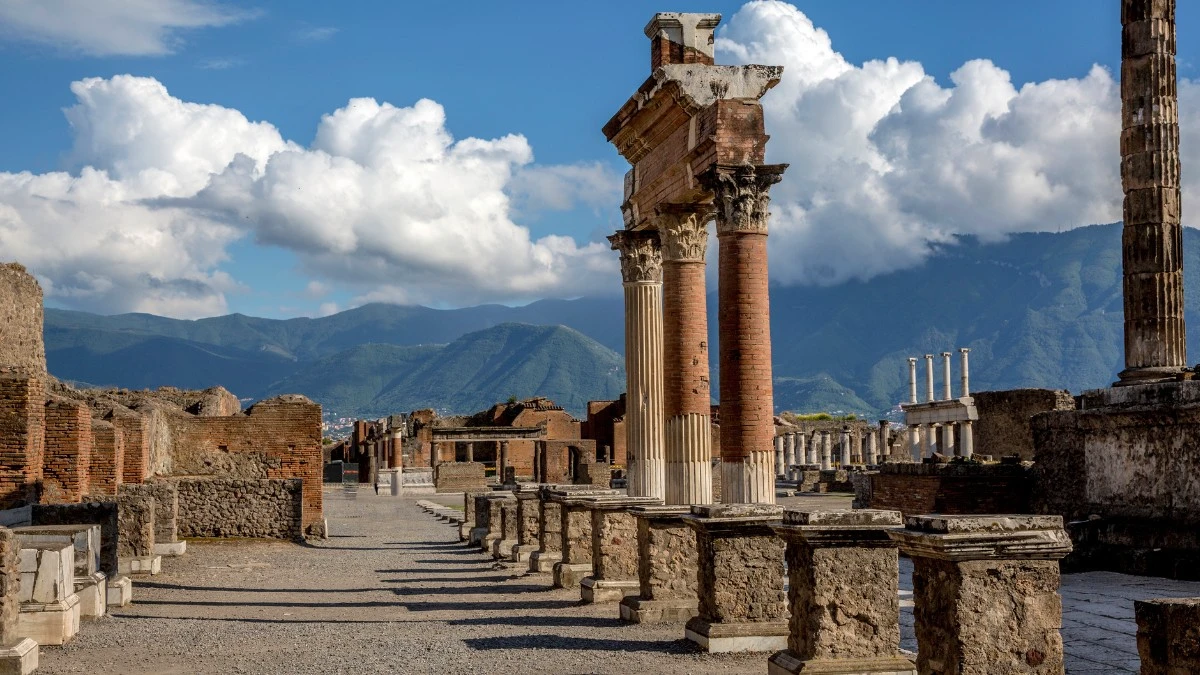Rome Attractions
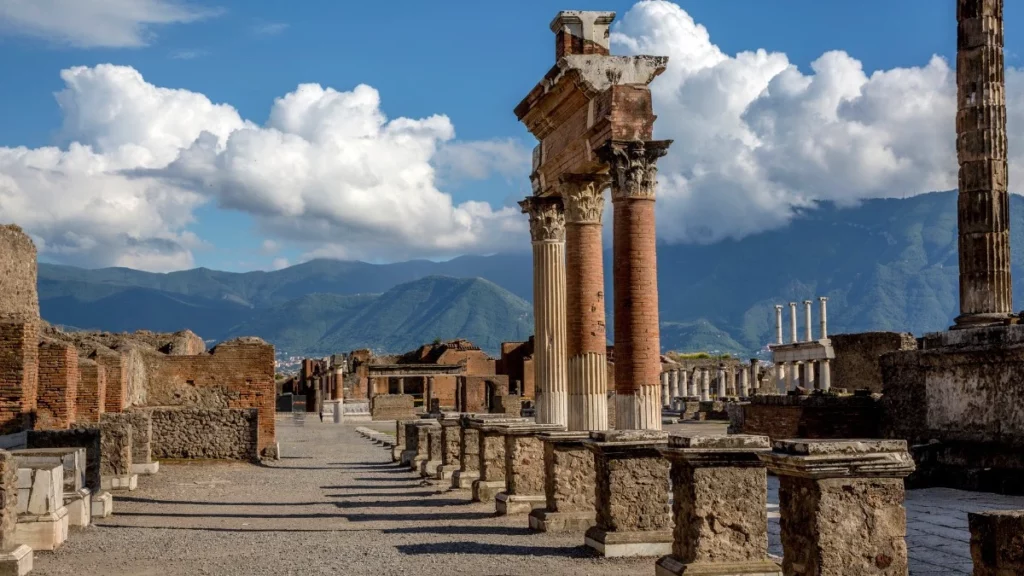
The ancient city of Pompeii, at the foot of Mount Vesuvius, is both tragic and breathtaking.
In 79 AD, a volcanic eruption buried Pompeii under ash and pumice, preserving it for centuries. Hidden until 1748, archaeologists have since uncovered its ruins, revealing a glimpse into Roman life.
Today, over 2.5 million tourists visit Pompeii annually. With ruins spread across 60+ hectares, exploring everything takes two days, but most visitors cover the highlights in 3 to 4 hours.
Here are the must-see attractions that bring this ancient city back to life.
Table of contents
Forum of Pompeii
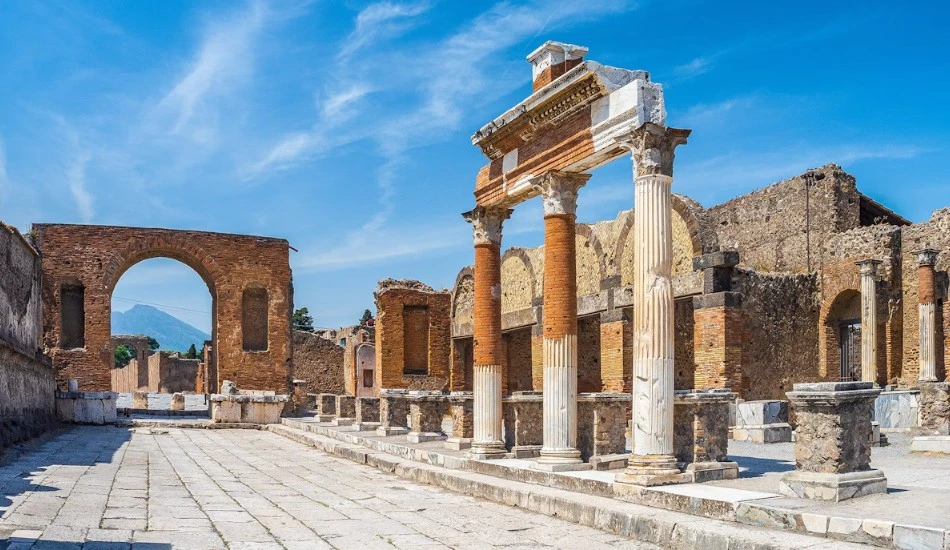
The Forum of Pompeii was the heart of the city’s daily life, serving as a hub for commerce, politics, and religion. It housed key landmarks like the Temples of Venus, Apollo, and Jupiter, the Basilica, and the Forum Baths.
Built between the 3rd and 2nd centuries B.C., its layout was designed to highlight the Temple of Jupiter, with a grand portico and travertine stone pavement adding to its charm.
Citizens gathered here for meetings, legal matters, and trade, making it a bustling center framed by the impressive backdrop of Mt. Vesuvius.
Recommended
Villa of the Mysteries

The Villa of the Mysteries is a fascinating Roman estate just outside Pompeii’s ancient walls, famous for its well-preserved frescoes.
Dating back to the 1st century B.C., it was likely owned by the powerful Istacidii family and underwent multiple renovations before the 79 AD eruption.
The villa gets its name from a striking fresco covering three walls, believed to depict a Dionysian initiation ritual.
Wine played a key role in these secret rites, as Dionysus (Bacchus) was the god of wine. Despite being a bit of a walk, the villa remains one of Pompeii’s most breathtaking sights, offering visitors a rare glimpse into ancient Roman art and religious practices.
Recommended
House of the Faun
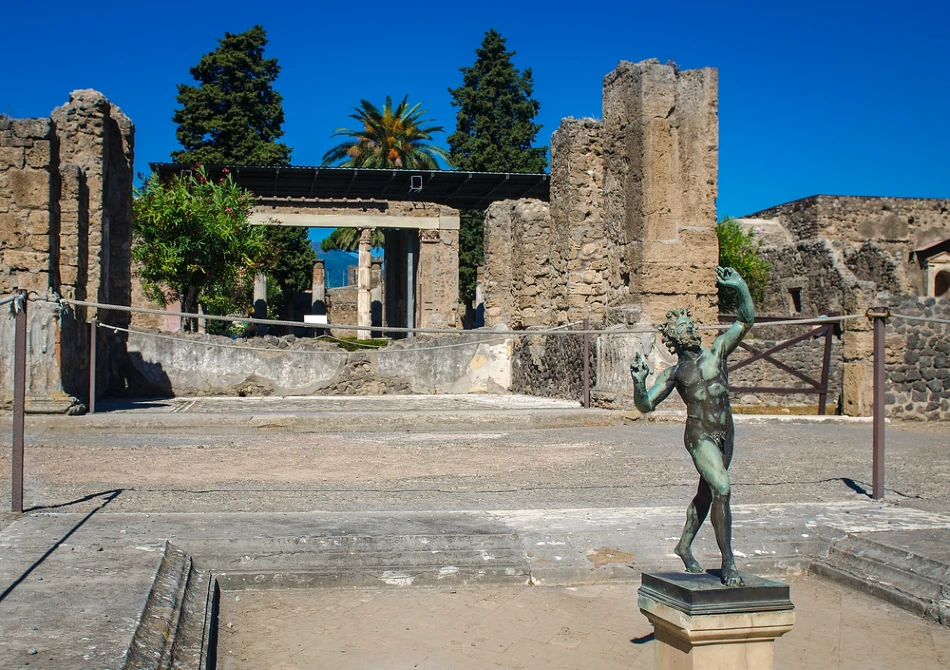
The House of the Faun is one of the largest and most luxurious homes in Pompeii, covering an entire city block.
Built around 180 B.C., it was constantly upgraded until the 79 AD eruption. The house gets its name from a bronze statue of a dancing faun, which stands in the central courtyard’s impluvium, a basin that collected rainwater.
It once housed incredible artworks, including the famous Alexander Mosaic, now in the Naples Archaeology Museum.
With grand courtyards, detailed mosaics, and separate areas for owners and servants, it remains one of the best-preserved examples of Roman aristocratic life.
Recommended
Amphitheatre of Pompeii
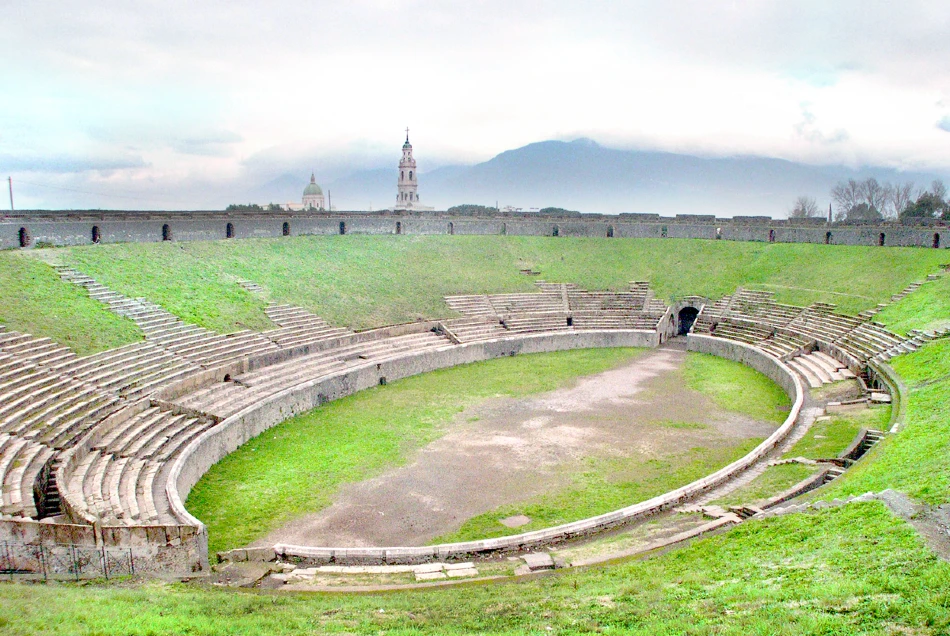
The Amphitheater of Pompeii, built in 70 B.C., is the oldest surviving Roman amphitheater and could hold 20,000 spectators—nearly the city’s entire population.
Located at the city’s edge for easy crowd movement, it hosted gladiator battles and large spectacles. In A.D. 59, a violent brawl broke out among fans, leading to a 10-year ban, though it reopened after just three.
The amphitheater remains famous today, even hosting a Pink Floyd concert in 1972. With its well-preserved structure, it offers a fascinating glimpse into Pompeii’s vibrant past.
Visual story: 13 must-know tips before visiting Pompeii
Lupanar
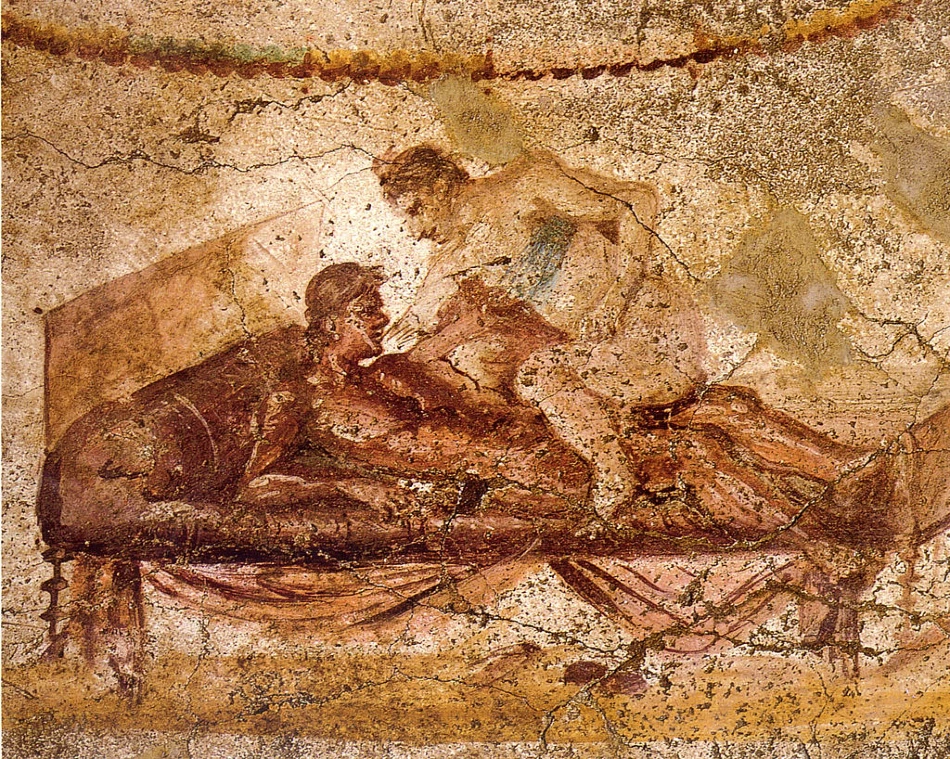
The Lupanar was Pompeii’s main brothel, easily recognizable by phallic symbols on the streets leading to it. This two-story building had five small rooms on each floor, with stone beds and erotic frescoes above the doors, likely advertising available services.
The prostitutes, mostly Greek and Oriental slaves, were paid just a few Roman coins—about the price of a glass of wine.
Since Pompeii was a port town, the explicit paintings helped foreign visitors communicate their requests.
Today, the Lupanar remains one of Pompeii’s most visited sites, offering a glimpse into the city’s more hidden history.
Related: Visit Pompeii and Herculaneum on a single-day tour
Forum Baths
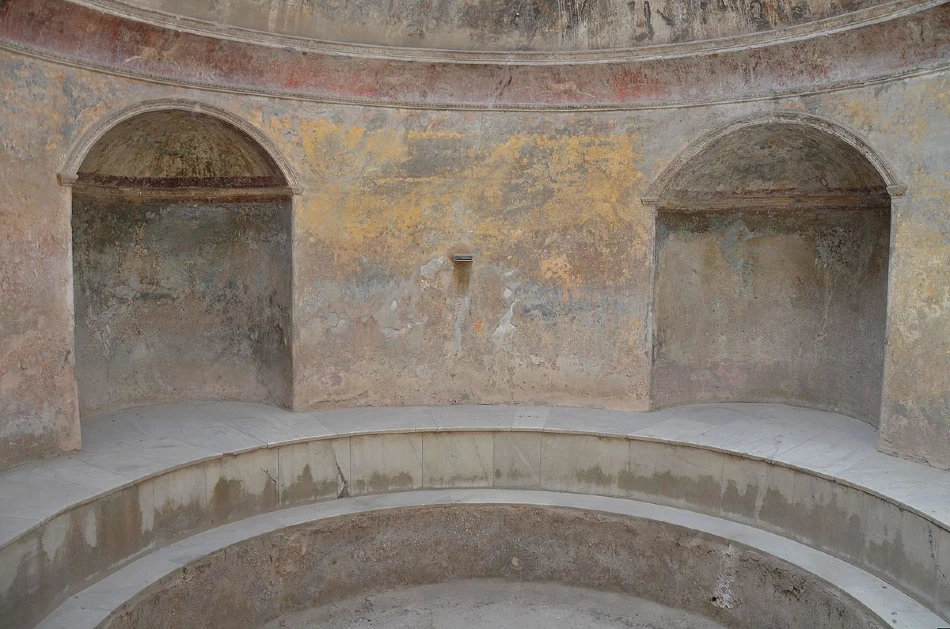
The Forum Baths were public baths in Pompeii, open to people of all social classes. Built around 80 B.C., they had separate sections for men and women and featured cold, warm, and hot baths.
Visitors could exercise, relax, or conduct business, much like a modern spa. The baths were beautifully decorated with stucco reliefs and terracotta figures and had a bronze brazier for heating.
Though damaged by the A.D. 62 earthquake, they remain well-preserved, offering a glimpse into Roman engineering and daily life.
Garden of the Fugitives
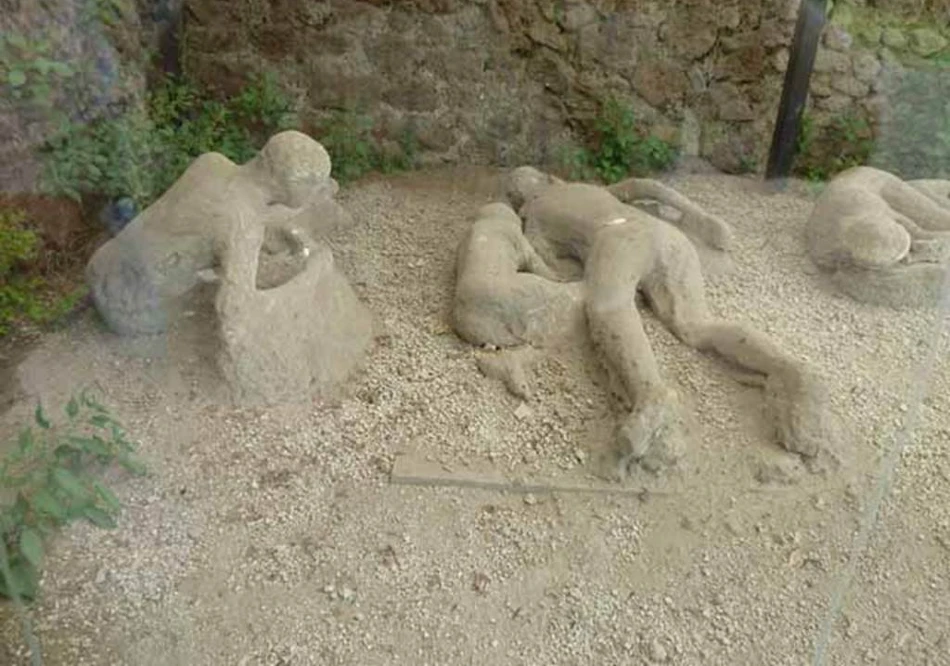
The Garden of the Fugitives is a haunting site in Pompeii, showing the final moments of 13 people who tried to escape the 79 AD eruption.
As they fled, a pyroclastic flow buried them in ash, leaving hollow cavities where their bodies once lay. In 1961, archaeologists filled these spaces with plaster, creating detailed casts that capture their last desperate moments.
Located at the back of Pompeii, the site is both fascinating and deeply moving, offering a powerful reminder of the city’s tragic history.
Must read
- Heard of the masturbating man of Pompeii?
- Interesting trivia about Pompeii ruins
House of Vetti
The House of Vettii was one of Pompeii’s richest homes, owned by two freed brothers, Aulus Vettius Conviva and Aulus Vettius Restitutus, who built their wealth through trade.
Excavated in 1894-1895, the house was beautifully decorated, with frescoes, statues, and water fountains showcasing the owners’ success.
Many rooms overlooked a courtyard garden, and some areas were used for business activities like wine selling and perfume making.
The house is also known for its explicit artwork, including a famous fresco of Priapus, symbolizing wealth and prosperity. After years of restoration, it reopened in 2016 but is currently closed to visitors.
House of the Tragic Poet

The House of the Tragic Poet gets its name from a mosaic of an actor preparing for a play. This home is decorated with beautiful mosaics, found in the atrium, tablinum, and courtyard.
The most famous one is the “Cave Canem” (Beware of the Dog) mosaic at the entrance. These artworks offer a glimpse into Roman life, fashion, and storytelling, much like photos do today.
Large theater of Pompeii
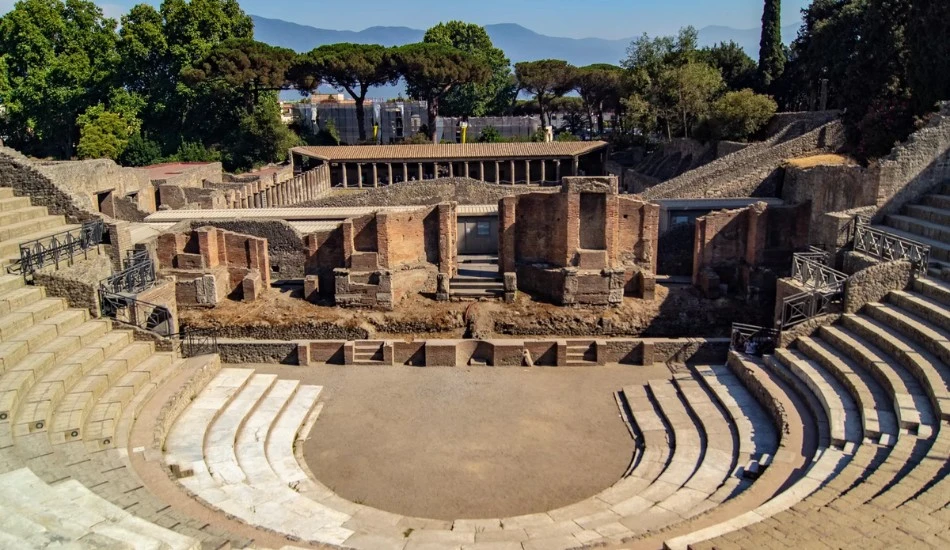
The Large Theater of Pompeii, built in the 2nd century B.C., could hold 5,000 spectators and mainly featured Greek tragedies and Roman comedies.
Designed on a hillside slope, it was later updated with numbered seats and a velarium, a large tarp to shield the audience from the sun.
Festivals and holidays, especially the Ludi Apollinaris honoring Apollo, often included performances here. Even the architect who modified it, Marcus Artorius Primus, left his name in graffiti, giving us a rare glimpse into its history.
Temple of Apollo
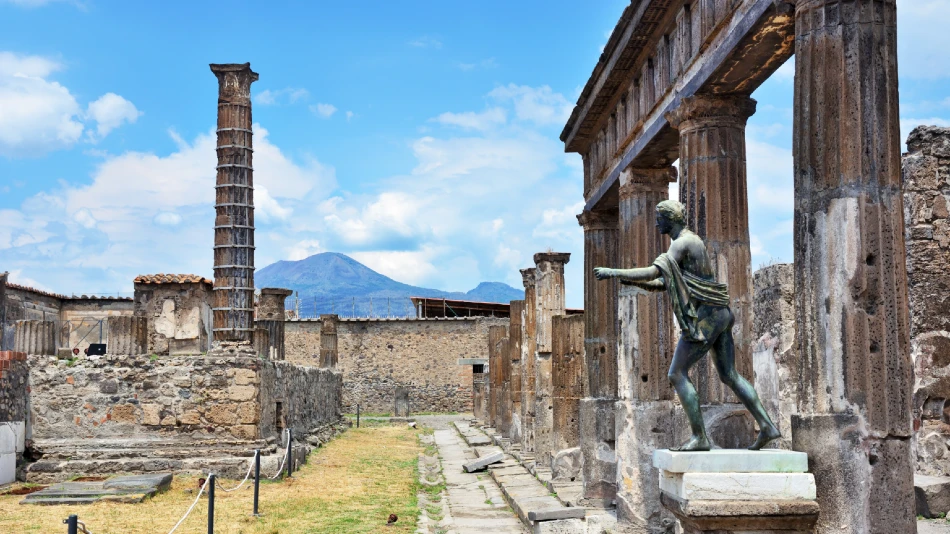
The Temple of Apollo is one of Pompeii’s oldest and most significant places of worship, dating back to the 6th century B.C.
Excavations have uncovered artifacts from an earlier temple, showing Apollo’s strong influence in Greek and Etruscan times.
Located near the Marina Gate, it played a central role in the city’s religious life. The temple, as seen today, was built between the 3rd and 2nd centuries B.C., featuring a raised podium, a courtyard with a portico, and an altar at the center.
During its peak, the temple hosted gladiator games, theatrical performances, and the grand Apollo festival, Ludi Apollonares, celebrating the god with three days of festivities. While the original statues of Apollo and Diana are no longer present, replicas stand in their place today.
Temple of Jupiter

The Temple of Jupiter stands at the heart of Pompeii’s Forum, with Mt. Vesuvius looming in the background. As one of the oldest structures in the city, it played a central role in religion and daily life.
The Forum was redesigned to highlight the temple, making it one of Pompeii’s most iconic landmarks. Though the original statues of Jupiter, Apollo, and Diana are gone, copies remain for visitors to see. This impressive ruin is a must-visit, offering a glimpse into the grandeur of Roman architecture and mythology.
